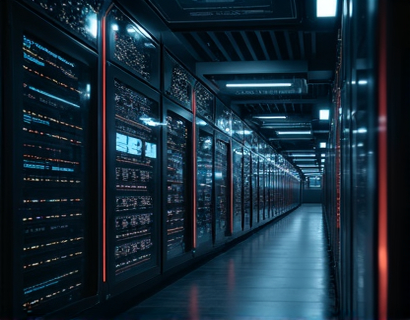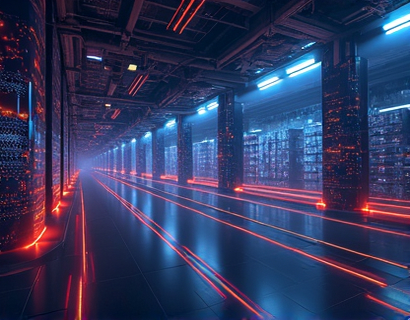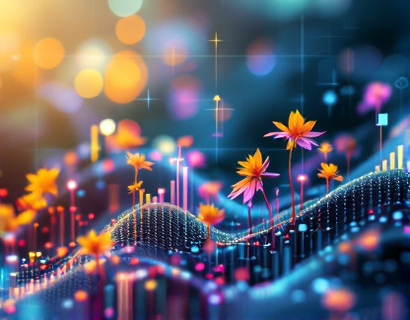Transforming Aquaculture Business Operations with Advanced Software Solutions
In the rapidly evolving landscape of aquaculture, business owners and managers face numerous challenges that can impact the success and sustainability of their operations. From managing complex logistics and ensuring optimal water quality to tracking growth rates and minimizing environmental impact, the tasks at hand are both diverse and demanding. Advanced software solutions have emerged as a game-changer in this industry, offering a suite of tools designed to streamline operations, enhance productivity, and optimize resource use. These solutions are not just beneficial but essential for aquaculture businesses aiming to remain competitive and thrive in a market characterized by stringent regulations and high consumer expectations.
Streamlining Operations
One of the primary advantages of implementing advanced software in aquaculture is the significant improvement in operational efficiency. Traditional methods of managing aquaculture operations often rely on manual processes, which are time-consuming and prone to errors. Software solutions automate routine tasks such as data entry, inventory management, and scheduling, freeing up valuable time for owners and managers to focus on strategic decision-making. For instance, automated feeding systems can be integrated with software to ensure that fish receive the right amount of feed at the optimal times, reducing waste and improving growth rates.
Moreover, these software solutions provide real-time monitoring and control over various parameters critical to aquaculture, such as water temperature, pH levels, and dissolved oxygen. By continuously monitoring these factors, the software can alert managers to any deviations from the desired ranges, enabling prompt corrective actions. This level of oversight not only ensures the health and well-being of the aquatic life but also prevents costly issues that could arise from neglect.
Enhancing Productivity
Productivity in aquaculture is closely tied to the health and growth of the stock, as well as the efficiency of the operations. Advanced software solutions contribute to higher productivity by providing detailed analytics and insights. For example, growth tracking features allow managers to monitor the development of fish over time, identifying patterns and optimizing feeding and environmental conditions for maximum growth. This data-driven approach enables precise adjustments, leading to faster growth cycles and higher yields.
In addition, software can facilitate better planning and resource allocation. By analyzing historical data and current trends, the software can predict future needs for feed, medication, and other supplies, helping to avoid shortages or excesses. This proactive approach ensures that resources are used efficiently, reducing costs and improving overall profitability. For instance, predictive analytics can help in planning the timing of harvests to coincide with market demands, maximizing revenue potential.
Optimizing Resource Use
Resource optimization is a critical aspect of sustainable aquaculture, and advanced software plays a pivotal role in achieving this goal. Water is one of the most vital resources in aquaculture, and its management directly affects the health of the aquatic environment and the economic viability of the operation. Software solutions can monitor and control water quality parameters, ensuring that conditions remain optimal for the fish. By maintaining ideal water conditions, the software helps reduce the need for water changes, which can be both costly and environmentally taxing.
Energy consumption is another area where software can drive significant savings. Advanced systems can optimize the use of pumps, aerators, and other equipment by adjusting their operation based on real-time data. For example, if the software detects that the water circulation system is running more efficiently during certain hours, it can adjust the operation schedule to coincide with these periods, thereby reducing energy costs. This not only lowers operational expenses but also minimizes the carbon footprint of the aquaculture facility.
Compliance and Reporting
Navigating the regulatory landscape of aquaculture can be complex, with various local, national, and international regulations to comply with. Advanced software solutions simplify this process by providing tools for tracking and managing compliance. These systems can be configured to remind managers of upcoming regulatory deadlines, generate required reports, and even assist in the documentation necessary for audits. This ensures that the aquaculture business remains in good standing with regulatory bodies, avoiding potential fines and reputational damage.
Furthermore, the software can help in maintaining transparency and accountability, which are increasingly important to consumers and stakeholders. By providing detailed records of operations, including feed usage, medication application, and environmental impact, the software helps build trust and credibility. This transparency can be a significant competitive advantage, as consumers and buyers are more likely to support businesses that demonstrate a commitment to sustainability and ethical practices.
Integration and Scalability
The versatility of advanced software solutions is another key factor in their value for aquaculture businesses. These systems are designed to integrate seamlessly with existing hardware and other software tools, creating a cohesive and efficient operational framework. Whether it's integrating with sensors for real-time data collection, connecting with financial management software for budget tracking, or linking with marketing tools for customer engagement, the flexibility of these solutions ensures that they can adapt to the unique needs of each aquaculture operation.
Scalability is also a crucial consideration, as aquaculture businesses may grow or evolve over time. Advanced software solutions are built to scale, accommodating increased production volumes and expanded operations without compromising performance. This means that as the business grows, the software can evolve with it, providing continuous support and optimization.
Case Studies and Success Stories
To illustrate the tangible benefits of implementing advanced software in aquaculture, consider a few success stories. One notable example is a mid-sized fish farm that adopted a comprehensive software solution to manage its operations. Prior to the implementation, the farm faced challenges with inconsistent feed management, leading to variable growth rates and higher feed costs. After integrating the software, the farm achieved a 15% reduction in feed waste and a 10% increase in average fish weight. These improvements translated into significant cost savings and higher revenue.
Another case involves a large-scale shellfish producer that utilized software for real-time monitoring of water quality and environmental conditions. The software's alerts and recommendations helped the producer prevent a major disease outbreak, saving thousands of dollars in treatment costs and avoiding a potential loss of stock. The proactive management enabled by the software not only protected the business but also enhanced its reputation for producing high-quality, healthy shellfish.
Future Trends and Innovations
The aquaculture industry is continually evolving, and the software solutions supporting it are no exception. Emerging technologies such as artificial intelligence (AI) and the Internet of Things (IoT) are set to further revolutionize aquaculture management. AI can enhance predictive analytics, providing even more accurate forecasts and personalized recommendations based on vast amounts of data. IoT devices can expand the network of sensors and automated systems, creating a more interconnected and intelligent operational environment.
Blockchain technology is another area with potential applications in aquaculture. By using blockchain, businesses can ensure the traceability and authenticity of their products, from farm to table. This level of transparency can further enhance consumer trust and open up new market opportunities, particularly in premium and organic segments.
Conclusion
In conclusion, advanced software solutions are transforming the aquaculture industry by streamlining operations, enhancing productivity, and optimizing resource use. These tools provide essential functionalities that help business owners and managers navigate the complexities of modern aquaculture, ensuring success and sustainability in a competitive market. As technology continues to advance, the potential for further innovation and improvement in aquaculture management is vast, promising a brighter future for the industry as a whole.










































